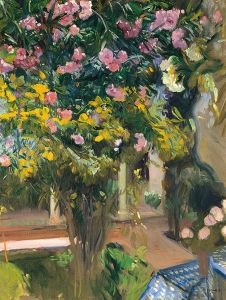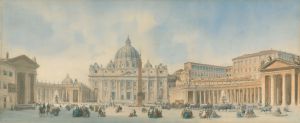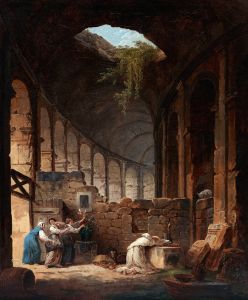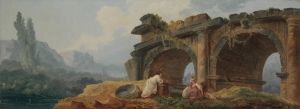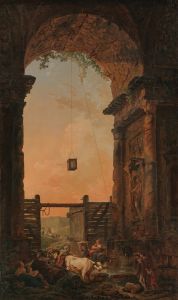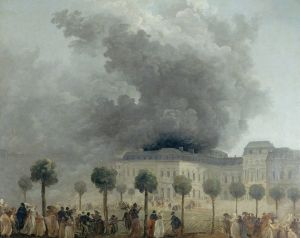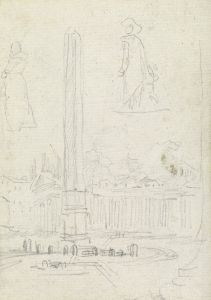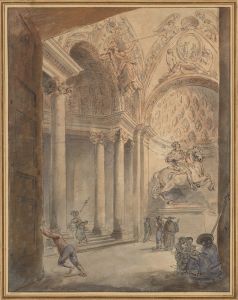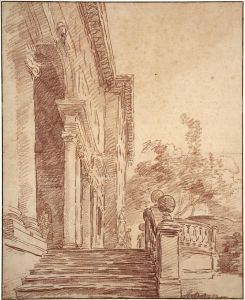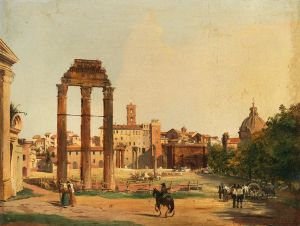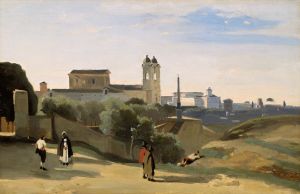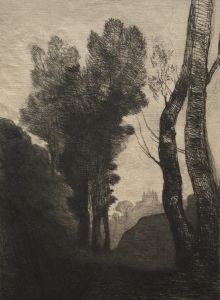
A courtyard near the Campo Vaccino in Rome
A hand-painted replica of Hubert Robert’s masterpiece A courtyard near the Campo Vaccino in Rome, meticulously crafted by professional artists to capture the true essence of the original. Each piece is created with museum-quality canvas and rare mineral pigments, carefully painted by experienced artists with delicate brushstrokes and rich, layered colors to perfectly recreate the texture of the original artwork. Unlike machine-printed reproductions, this hand-painted version brings the painting to life, infused with the artist’s emotions and skill in every stroke. Whether for personal collection or home decoration, it instantly elevates the artistic atmosphere of any space.
"A Courtyard near the Campo Vaccino in Rome" is a painting by the French artist Hubert Robert, who was renowned for his depictions of architectural ruins and landscapes. The work is believed to have been created during or after Robert's time in Italy, where he studied and drew inspiration from the country's classical ruins and urban scenery. Hubert Robert, often referred to as "Robert des Ruines" (Robert of the Ruins), was a prominent figure in 18th-century European art, known for blending real and imagined architectural elements in his compositions.
The painting portrays a courtyard scene near the Campo Vaccino, the name historically used for the Roman Forum during the Middle Ages and early modern period. At that time, the area was used as a grazing ground for cattle, hence the name "Campo Vaccino," which translates to "Cow Field." The painting captures the atmosphere of decay and grandeur that characterized the ruins of ancient Rome, a theme that fascinated many artists and intellectuals of the period.
Hubert Robert's work often reflects the influence of the Grand Tour, a cultural journey through Europe undertaken by wealthy young men of the 17th and 18th centuries, with Rome being a key destination. His time in Rome, from 1754 to 1765, allowed him to study the city's ancient ruins and Baroque architecture, as well as the works of other artists such as Giovanni Paolo Panini and Giovanni Battista Piranesi. These influences are evident in the composition and subject matter of "A Courtyard near the Campo Vaccino in Rome."
The painting is characterized by its meticulous attention to architectural details, dramatic use of light and shadow, and a sense of romantic nostalgia for the past. It likely includes a combination of real and imagined elements, a hallmark of Robert's style. The figures in the scene, often depicted as small in scale compared to the surrounding architecture, serve to emphasize the grandeur and timelessness of the ruins.
As of now, specific details about the painting's current location, dimensions, and medium are not widely documented. However, it remains an example of Hubert Robert's skill in capturing the interplay between human activity and the monumental remnants of history, a theme that resonated deeply with the artistic and cultural sensibilities of his time.





